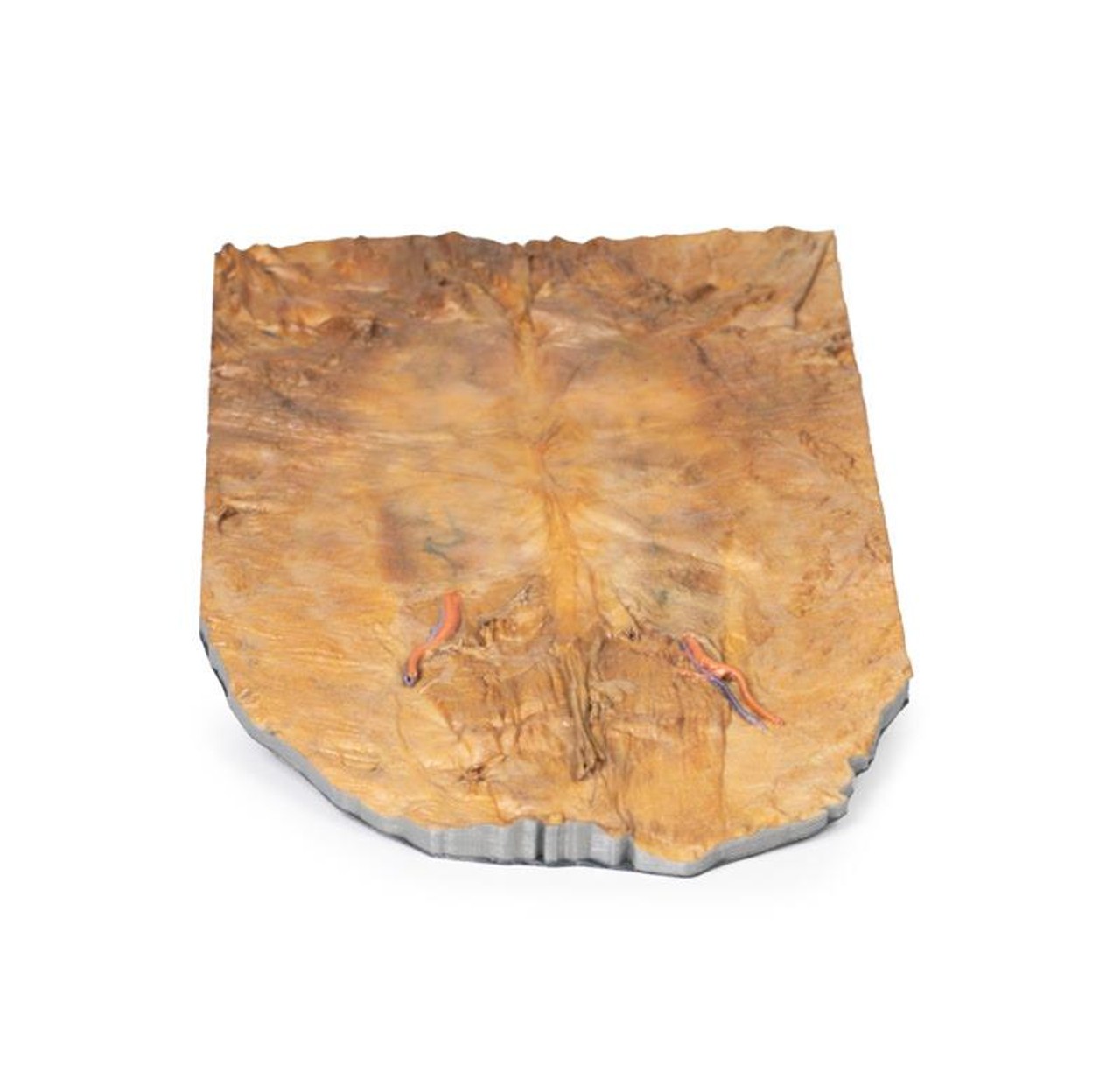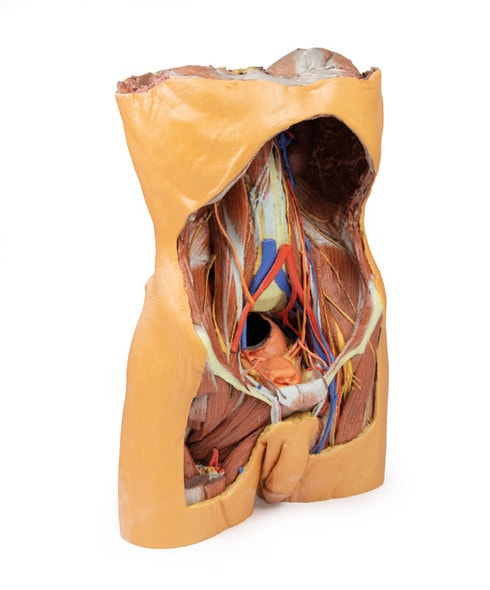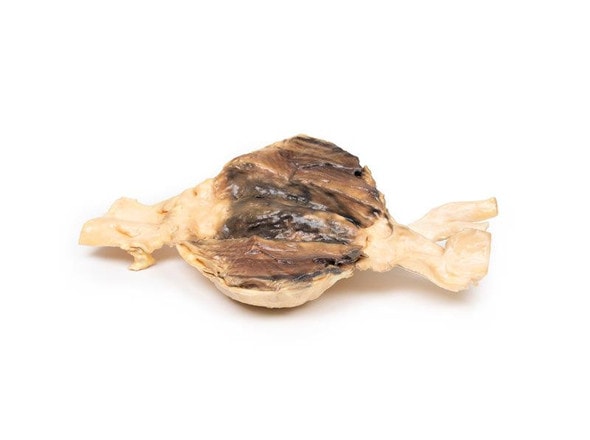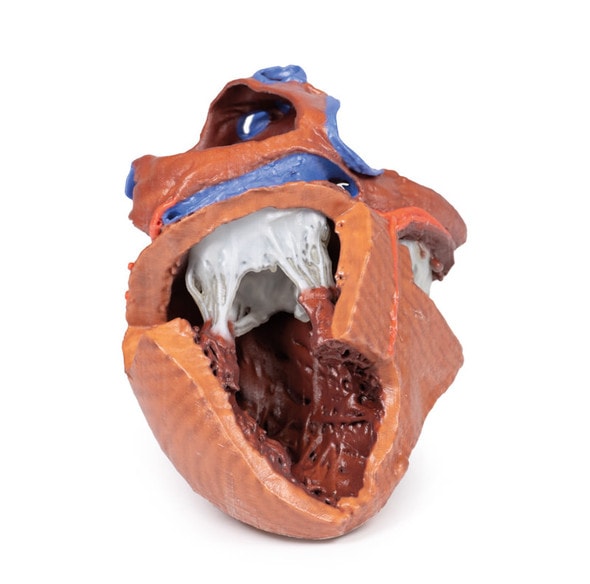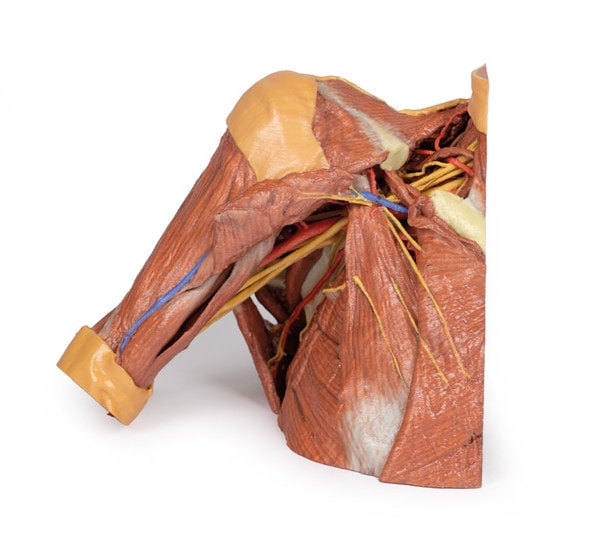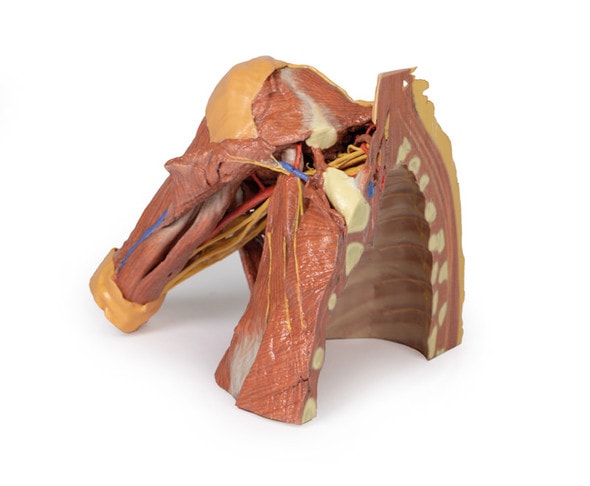Description
This 3D model captures the internal surface of the anterior abdominal wall, a region oftentimes removed or damaged during dissection (and complimenting our A8 abdominal specimen where the anterior wall has been removed). The parietal peritoneum has been removed from the internal surface of the specimen in order to more clearly demonstrate the relationships of the anterior abdominal muscle fibers and connective tissue structures as they converge on the midline. On the margins of the specimen, particularly superiorly, the horizontally-oriented transversus abdominis muscle fibers can be seen converging towards their aponeurosis (tendon sheet). In the inferior 1/3 of the model, we can see the termination of the posterior aspect of the aponeurosis forming the arcuate line. This marks the location where the aponeurosis changes its orientation relative to the rectus abdominis muscle (visible on either side of the midline); above the arcuate line the aponeurosis of the transversus abdominis muscle is evenly divided around the rectus abdominis muscle, while below the arcuate line all aponeurotic fibers pass anterior relative to the rectus abdominis. At this point, we can observe the inferior epigastric arteries (and accompanying veins) passing superiorly from their origins from the external iliac arteries and veins to pass into the anterior abdominal wall tissues. On the right side of the model we can appreciate how the orientation of the inferior epigastric artery relative to the fibers of the rectus abdominis muscle define the apex of the inguinal triangle (missing only the base formed by the inguinal ligament, not present in this specimen). This region lateral to the inferior epigastric artery is a frequent site of direct hernias (which can be appreciated on the A8 abdomen model) given the relative weakness of the wall inferior to the arcuate line and lateral to the margin of the rectus abdominis muscle. In the midline, and dividing the two halves of the rectus abdominis muscle, is part of the median abdominal ligament a draped fold of the parietal peritoneum that covers the urachus, a fibrous embryological remnant of the allantois, which extends from the bladder into the umbilical cord.
Advantages of 3D Printed Anatomical Models
- 3D printed anatomical models are the most anatomically accurate examples of human anatomy because they are based on real human specimens.
- Avoid the ethical complications and complex handling, storage, and documentation requirements with 3D printed models when compared to human cadaveric specimens.
- 3D printed anatomy models are far less expensive than real human cadaveric specimens.
- Reproducibility and consistency allow for standardization of education and faster availability of models when you need them.
- Customization options are available for specific applications or educational needs. Enlargement, highlighting of specific anatomical structures, cutaway views, and more are just some of the customizations available.
Disadvantages of Human Cadavers
- Access to cadavers can be problematic and ethical complications are hard to avoid. Many countries cannot access cadavers for cultural and religious reasons.
- Human cadavers are costly to procure and require expensive storage facilities and dedicated staff to maintain them. Maintenance of the facility alone is costly.
- The cost to develop a cadaver lab or plastination technique is extremely high. Those funds could purchase hundreds of easy to handle, realistic 3D printed anatomical replicas.
- Wet specimens cannot be used in uncertified labs. Certification is expensive and time-consuming.
- Exposure to preservation fluids and chemicals is known to cause long-term health problems for lab workers and students. 3D printed anatomical replicas are safe to handle without any special equipment.
- Lack of reuse and reproducibility. If a dissection mistake is made, a new specimen has to be used and students have to start all over again.
Disadvantages of Plastinated Specimens
- Like real human cadaveric specimens, plastinated models are extremely expensive.
- Plastinated specimens still require real human samples and pose the same ethical issues as real human cadavers.
- The plastination process is extensive and takes months or longer to complete. 3D printed human anatomical models are available in a fraction of the time.
- Plastinated models, like human cadavers, are one of a kind and can only showcase one presentation of human anatomy.
Advanced 3D Printing Techniques for Superior Results
- Vibrant color offering with 10 million colors
- UV-curable inkjet printing
- High quality 3D printing that can create products that are delicate, extremely precise, and incredibly realistic
- To improve durability of fragile, thin, and delicate arteries, veins or vessels, a clear support material is printed in key areas. This makes the models robust so they can be handled by students easily.

